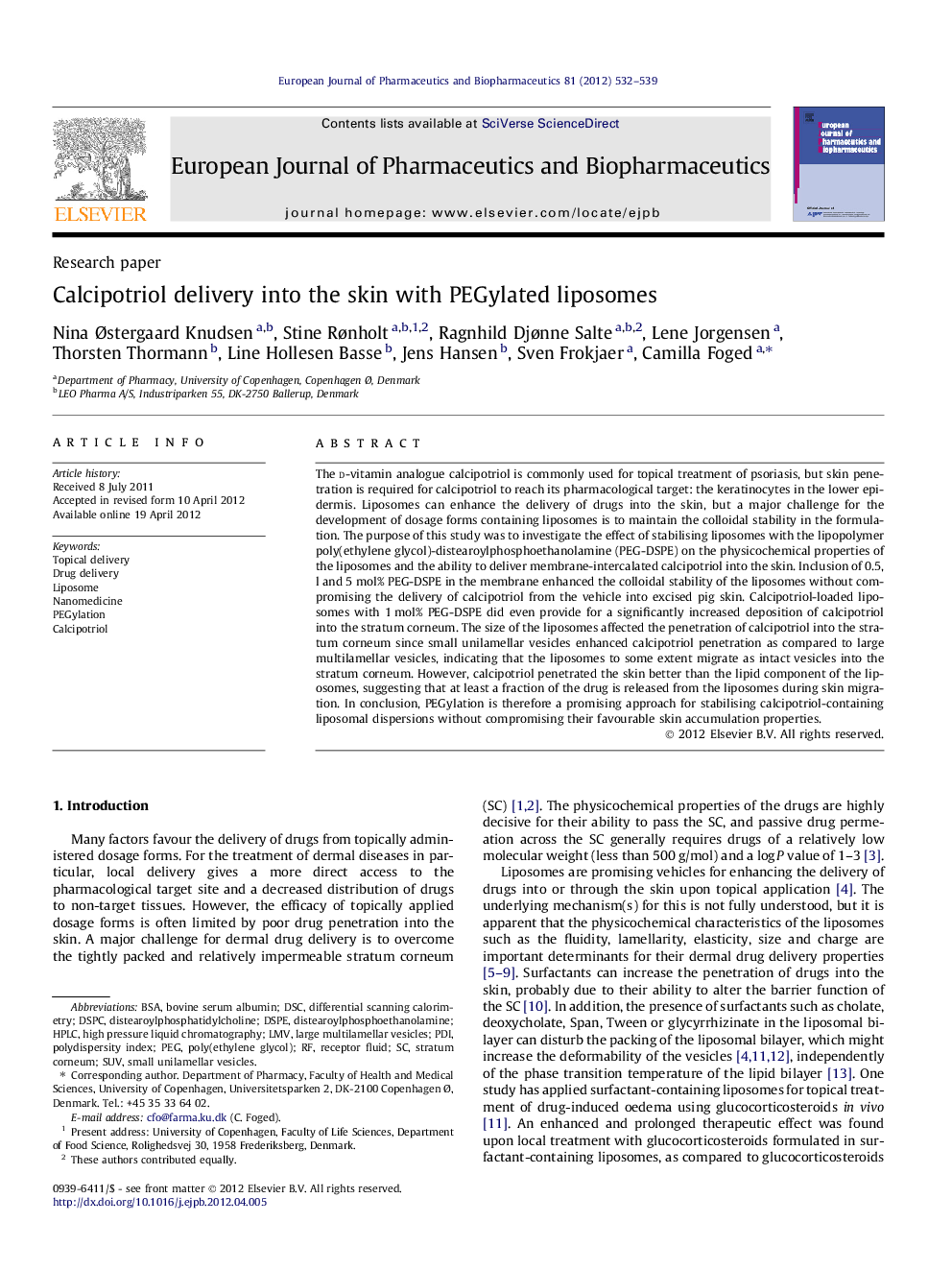| کد مقاله | کد نشریه | سال انتشار | مقاله انگلیسی | نسخه تمام متن |
|---|---|---|---|---|
| 2083946 | 1545359 | 2012 | 8 صفحه PDF | دانلود رایگان |

The d-vitamin analogue calcipotriol is commonly used for topical treatment of psoriasis, but skin penetration is required for calcipotriol to reach its pharmacological target: the keratinocytes in the lower epidermis. Liposomes can enhance the delivery of drugs into the skin, but a major challenge for the development of dosage forms containing liposomes is to maintain the colloidal stability in the formulation. The purpose of this study was to investigate the effect of stabilising liposomes with the lipopolymer poly(ethylene glycol)-distearoylphosphoethanolamine (PEG-DSPE) on the physicochemical properties of the liposomes and the ability to deliver membrane-intercalated calcipotriol into the skin. Inclusion of 0.5, l and 5 mol% PEG-DSPE in the membrane enhanced the colloidal stability of the liposomes without compromising the delivery of calcipotriol from the vehicle into excised pig skin. Calcipotriol-loaded liposomes with 1 mol% PEG-DSPE did even provide for a significantly increased deposition of calcipotriol into the stratum corneum. The size of the liposomes affected the penetration of calcipotriol into the stratum corneum since small unilamellar vesicles enhanced calcipotriol penetration as compared to large multilamellar vesicles, indicating that the liposomes to some extent migrate as intact vesicles into the stratum corneum. However, calcipotriol penetrated the skin better than the lipid component of the liposomes, suggesting that at least a fraction of the drug is released from the liposomes during skin migration. In conclusion, PEGylation is therefore a promising approach for stabilising calcipotriol-containing liposomal dispersions without compromising their favourable skin accumulation properties.
PEGylation improves the colloidal stability of liposomes for dermal application without compromising the delivery of calcipotriol to the skin.Figure optionsDownload high-quality image (100 K)Download as PowerPoint slide
Journal: European Journal of Pharmaceutics and Biopharmaceutics - Volume 81, Issue 3, August 2012, Pages 532–539